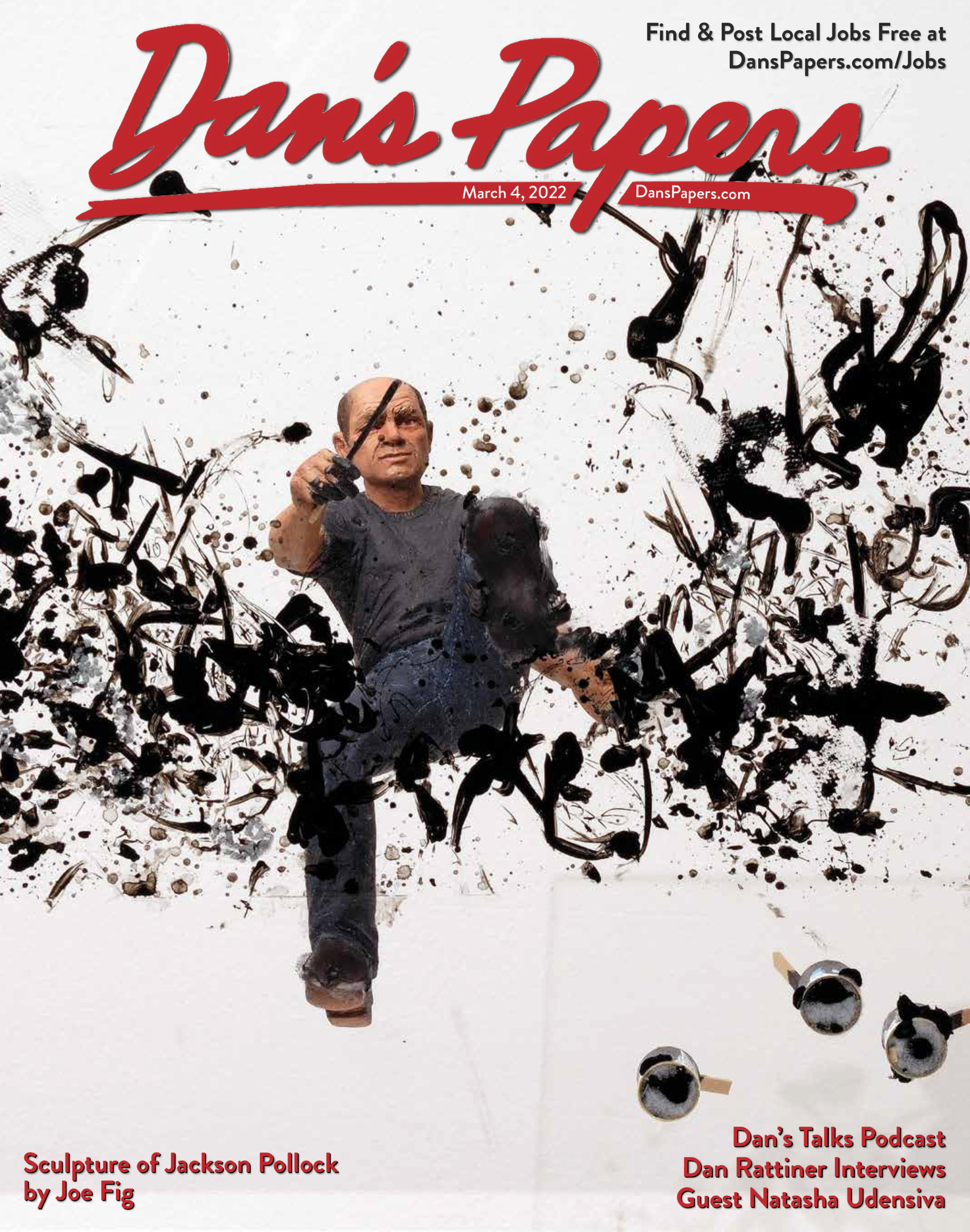Dan's Cover Artist Joe Fig Resurrects Pollock in Miniature Form
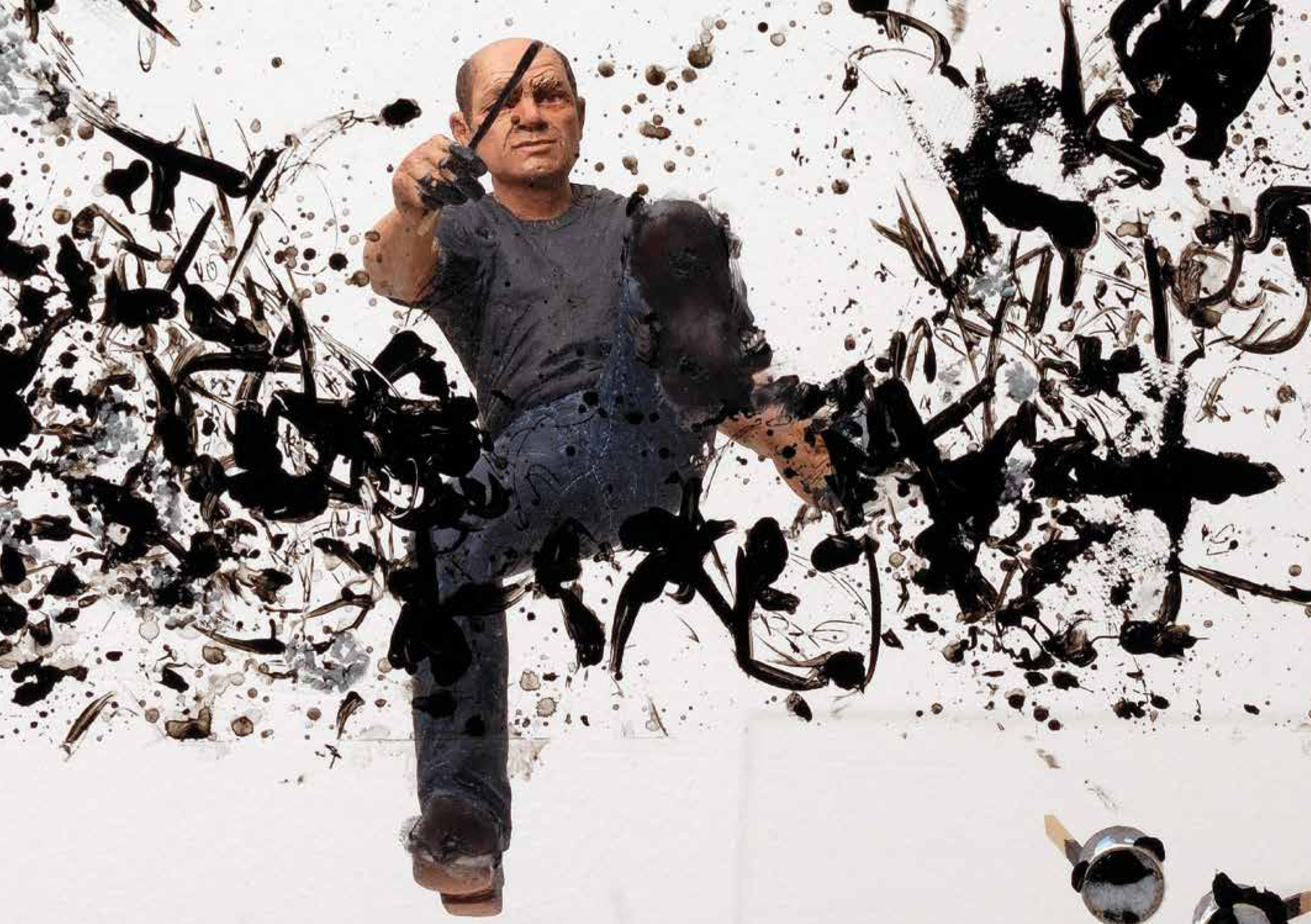
This week’s cover art, “Namuth’s Pollock #10” by artist Joe Fig is somewhat unique in the history of Dan’s Papers covers, presenting a photograph of a miniature sculpture of a photograph of a painter making a painting (try saying that 10 times fast). The sculpture, which is now on view at the Parrish Art Museum’s XS exhibition of small works (through April 3), depicts East End legend Jackson Pollock working at his Springs studio, as filmed by East Hampton art photographer Hans Namuth who took hundreds of pictures of the iconic painter during the fall of 1950. It’s one of many in Fig’s series of miniature artist studios, both historical and contemporary, recreated in painstaking detail. Other East End subjects in the series include Willem de Kooning, April Gornik and Eric Fischl (also on view at the Parrish), Chuck Close, Ross Bleckner and Andy Warhol, to name a few.
While not the most detailed or expansive of his miniature artists and studios, “Namuth’s Pollock #10” stands out for its Russian doll quality, as described above. It showed the Abstract Expressionist from the perspective of Namuth who chronicled his efforts and, for the image in question, asked Pollock to paint on glass so he could film his process from beneath it. The resulting footage revealed a view looking up from what would have otherwise been a canvas laid flat on the studio floor.
Here, Fig talks about this sculpture and the works that have earned him worldwide acclaim.
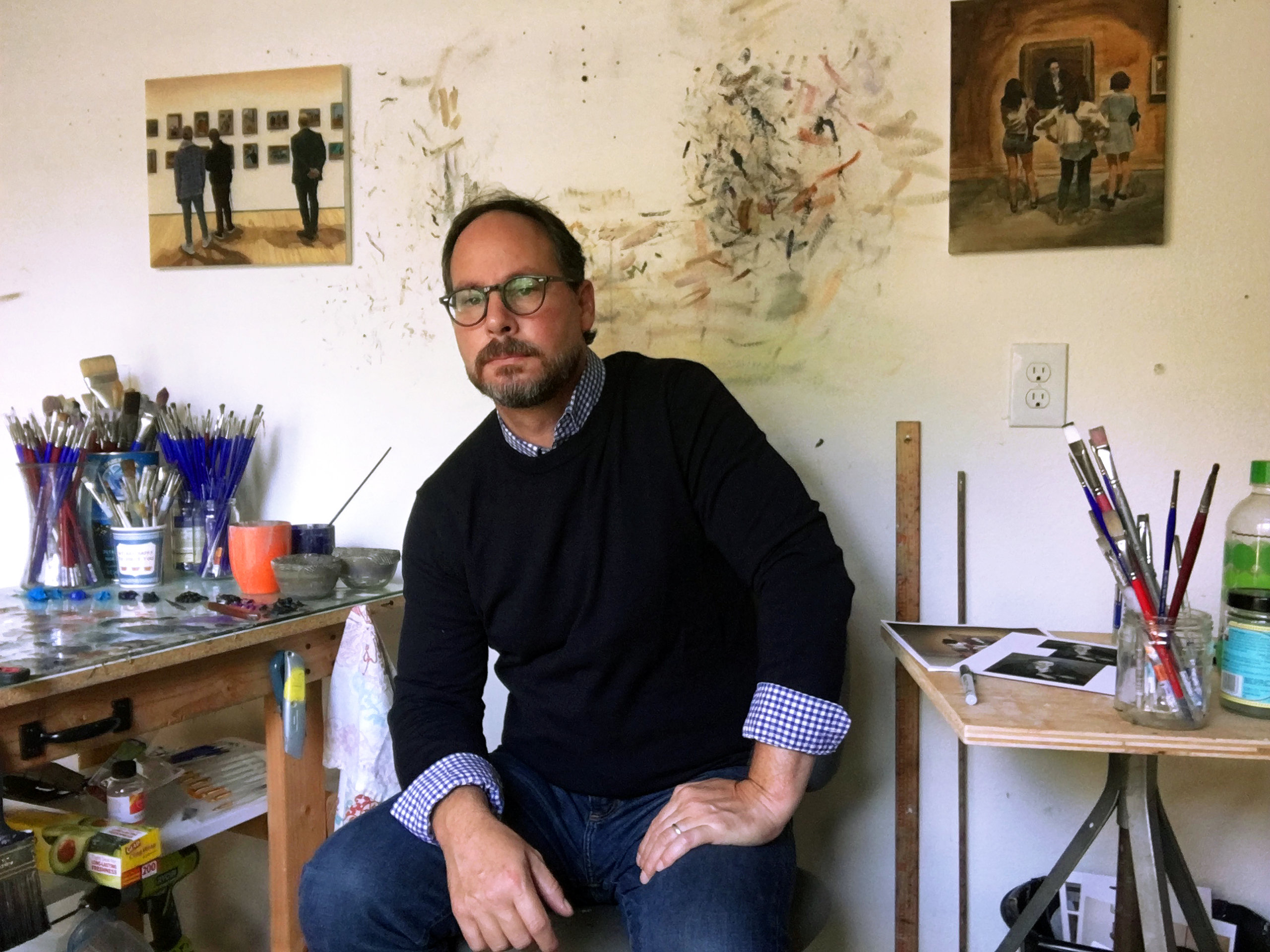
What inspired this week’s cover art?
With the Pollock piece, I’d previously made a miniature sculpture of his entire studio (interior pictured below), and then I was fascinated with making a smaller, independent piece based on the Hans Namuth photographs, and especially that film. … Just after that, Pollock stopped working and then went off and started drinking again, and had major problems.
Have you been to the Pollock-Krasner House in person?
Yeah. In fact, that was a really pivotal moment in the way I worked. When I started making miniature sculptures, I started off with historical artists in their studios and the references I had, or was working from, were only found in books. So I made a few of Barnett Newman, Clyfford Still, even de Kooning I made before that, and at that time I’d gone out to the Pollock House on a beautiful, late-October day with my wife. … Knowing the historic photographs is one thing, but to actually be there physically is a completely different experience. And to walk around in the studio, I was really surprised how much smaller it was than it appears in the films and photographic stills.
Even though Pollock was no longer around, to be in the studio really had an impact on me, and so after I made that Pollock sculpture — which I recreated from the Namuth photographs and then from physically being there — all the work after that was focused on contemporary artists and actually going to their studios and having that personal interaction, because I felt I was missing that.
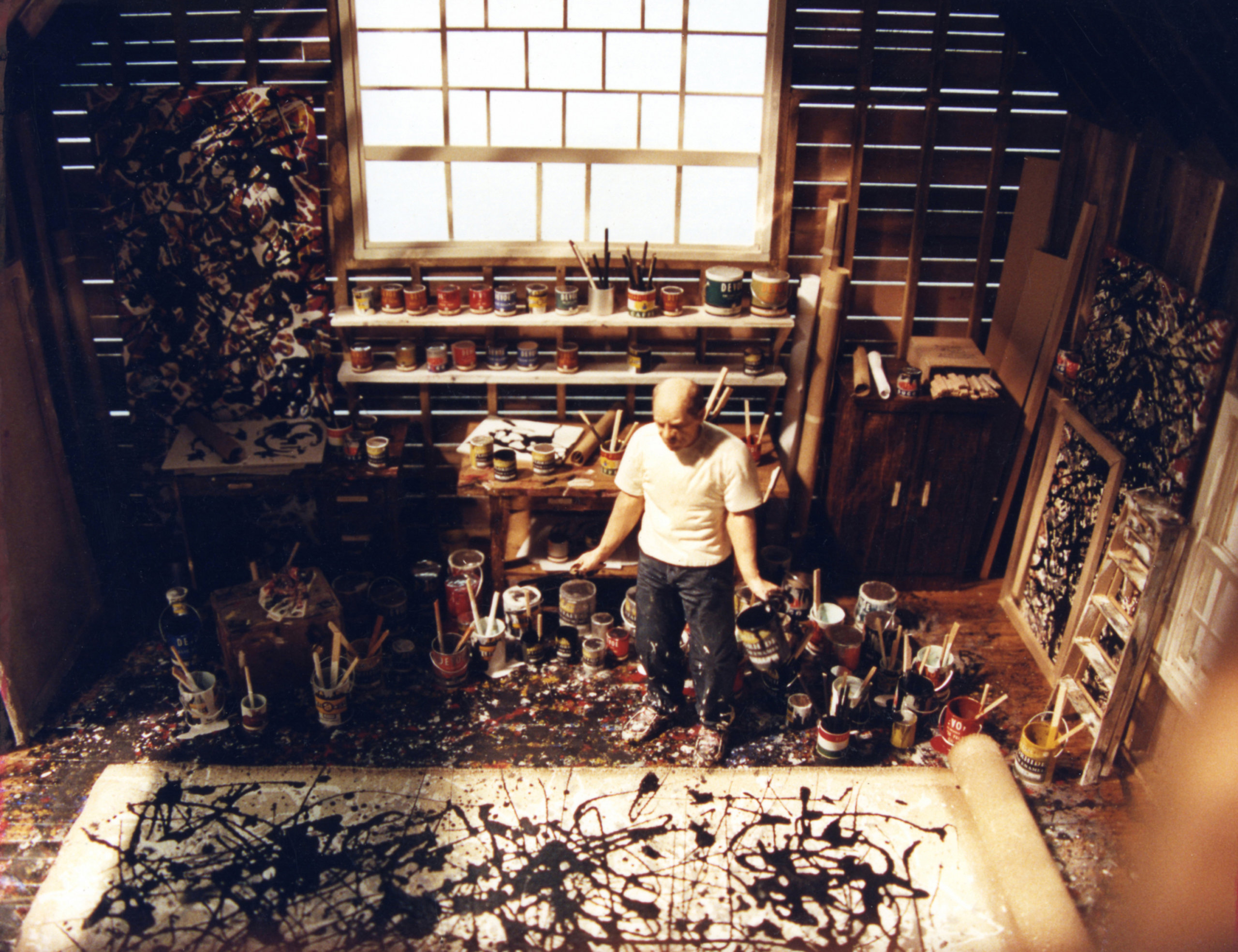
How was it created?
The challenge for me is always replicating in miniature the texture, the scale, the mark making and all that stuff, that it’s authentic. So for the Pollock piece, it was a little challenging because I tried different techniques …sometimes paint drips on the floor — you can’t just drop water or paint on it because it’s too big, the scale isn’t quite right.
With the Pollock piece, I was trying a few different techniques of trying to splatter it with a toothbrush and all this other stuff. I ended up doing his process, just on a smaller scale, using enamel paint and, instead of a big stick, a tooth pick, and basically working like he does, drawing with it over the plexi. … (The figures) are made of polymer clay, Sculpey, and then the skin tones are hand painted in oil paint. The clothing and all that I’ll usually mix, like for the denim jeans …they don’t make like a denim-looking Sculpey, so I’ll mix either a deep blue with a black and mix it together, just like mixing paint.
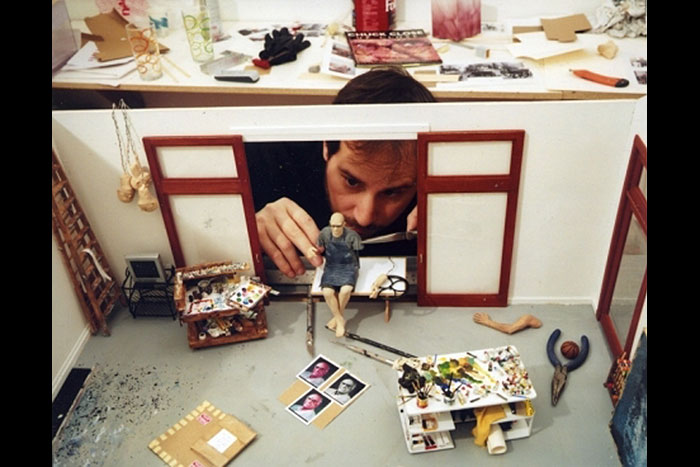
What is it particularly about Pollock that turns you on?
I would throw de Kooning in there, as well, especially as another artist out on the East End. … I see the two of them as kind of a yin-yang. Pollock is just such an iconic figure in the art world and the history of art … everyone does a Pollock painting at one point. … He’s probably the most famous American painter. Everyone knows who Pollock is. And his work is amazing. Stand in front of one of those paintings and you just get lost. He completely revolutionized the contemporary art world at the time.
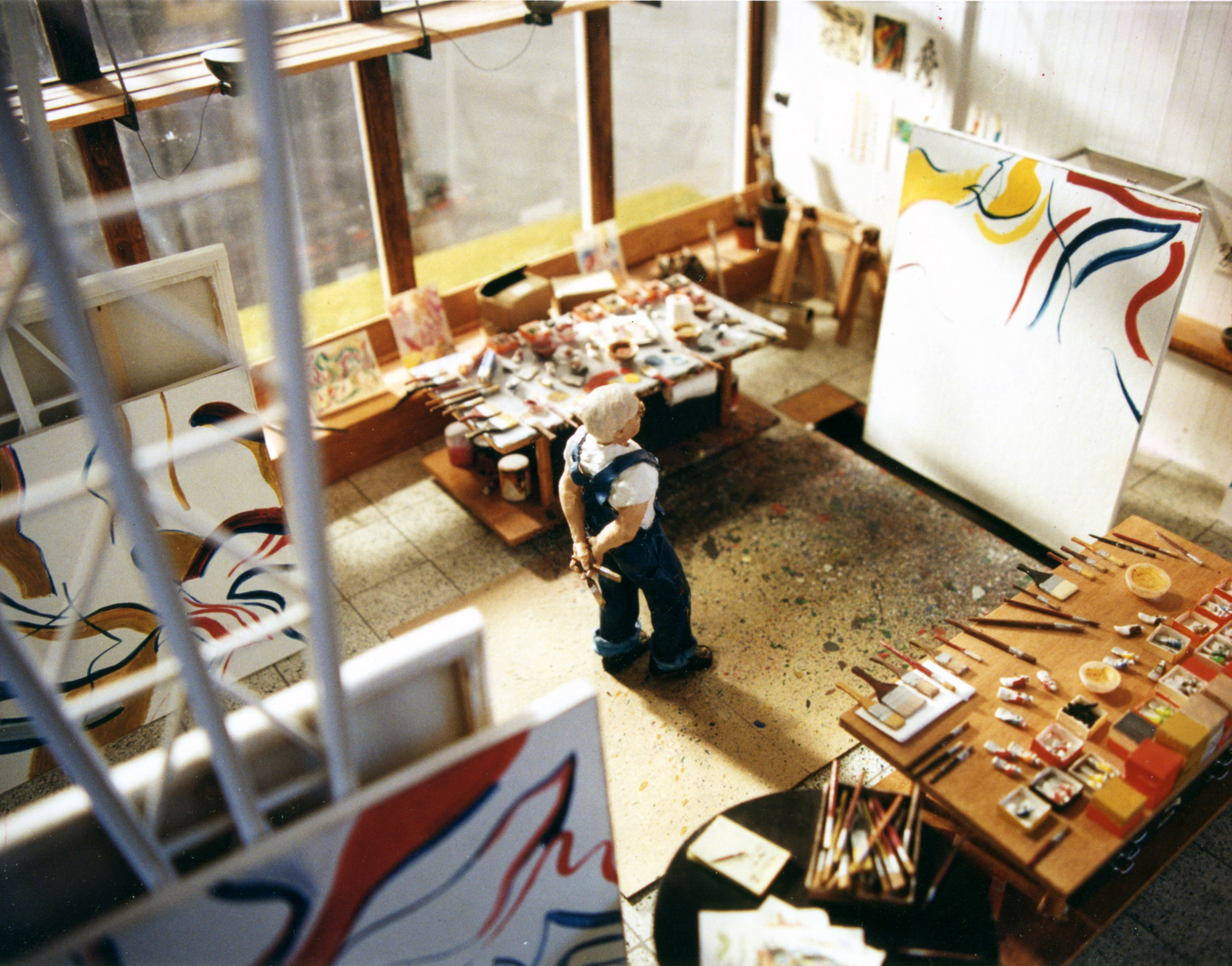
What’s your response when people say, “My kid can do that” about Pollock?
One of the fun parts for me as a painter when I’m replicating these works, especially in a case like a Pollock, you can’t just throw paint around, you really have to study how they were built up, and the process and how they were made. And those paintings are very complex when you get into them. …It’s a whole choreographed experience.
How would you describe your style and how did you develop it?
My style, I guess it marries between sculpture and painting. I’ve always been interested in portraiture, and I’d done portrait paintings, sort of in the vein of representational paintings, for about 10 years before I started making the miniature sculptures. And then with the sculptures of artists in their studios, sort of the shorthand answer with that was, things came to an end with the paintings I was making, the representational paintings which were a large scale. I started working opposite, and through various kinds of materials, the first image I made was (a sculpture) of Alice Neel in her studio in a snow globe. … That was too confining, so for the next piece I took her out of the snow globe and started working in a dollhouse scale with the artists.
That came about when I was in grad school thinking of portraiture. There were about 60 people in my class, everyone had their own studio space, and walking around the studios and looking at the studio as a form of portraiture, and how each studio is unique to the way each artist works, and how they set it up and how they work in that space, all the detritus that they leave around, is a portrait when you pull them out of it. So I started looking at the studios as a form of portraiture and just started focusing on artists.
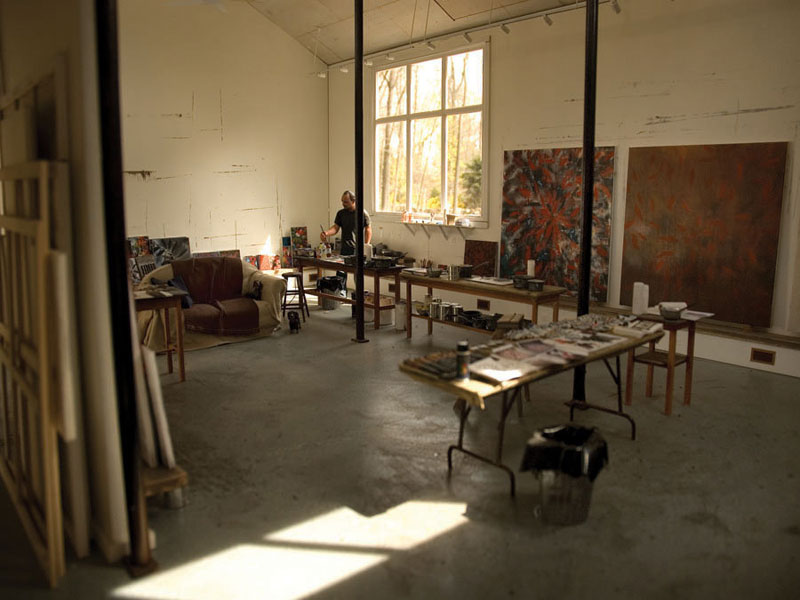
Did you have a background in miniatures, like model trains, dollhouses, dioramas or miniature wargaming?
I had GI Joes as a kid, but no.
How detailed are you going with the construction of these studios?
I would pretty much build them like a house, especially the Pollock one because all the beams on the inside were exposed. For that, it was literally like framing out a house. … It’s very much like building. Especially the April Gornik and Eric Fischl — that was the biggest one, that took me probably seven or eight months to complete. … I adored the two of them. They’ve been very generous and very supportive of me, and Eric had the blueprints right there, so he gave me the blueprints to work from, which was really helpful.
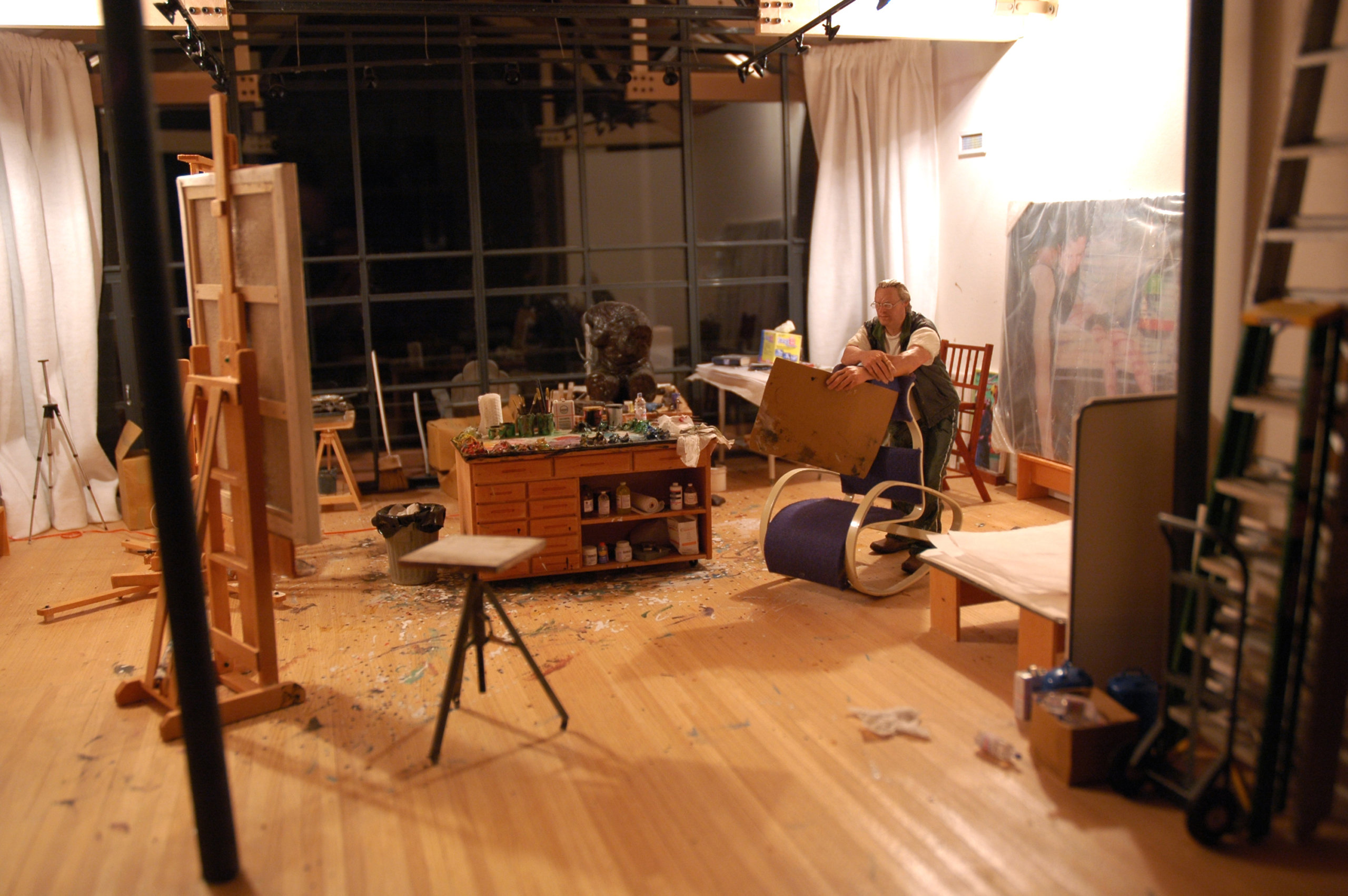
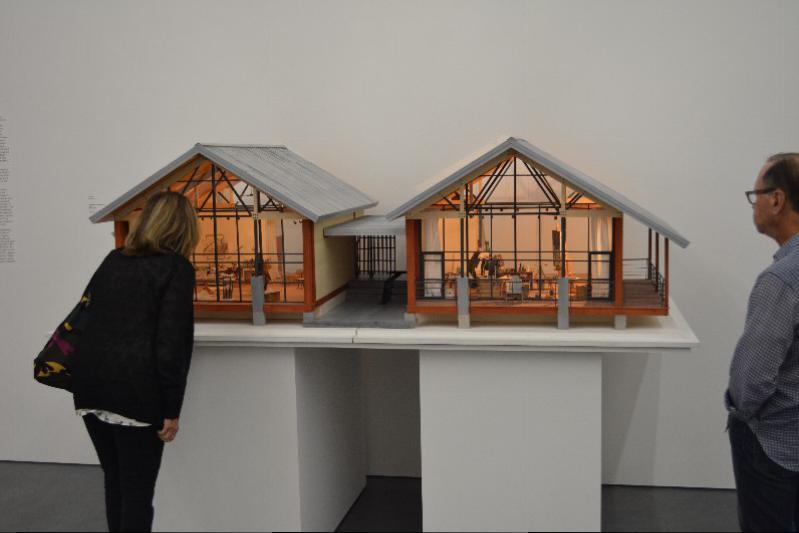
What are you working on now?
I’ve mostly been focused the last five of six years on small scale paintings where the figures are about six or seven inches high. … In the new paintings that I’ve been working on, they’re people contemplating art in museums or galleries. So the fun, the challenge for me with that is then replicating the works that they’re viewing.
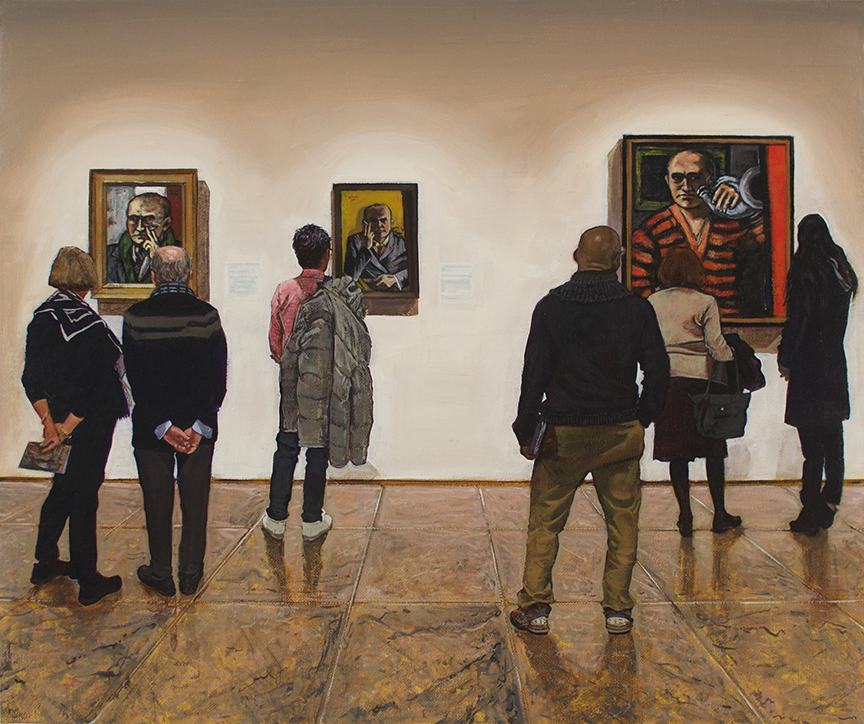
Do you have any closing thoughts?
In 2007 or so I had my first show at the Parrish in Southampton. I love that museum. And then when they moved to Water Mill, to have my work, especially the pieces they have, the Pollock piece (and the Gornik/Fischl studio), in their collection, it’s a real honor to have that. It’s a really, really great museum.
Find more of Joe Fig’s work, including his new series of small paintings featuring artists at work, at Cristin Tierney Gallery in NYC, cristintierney.com, or at his website joefig.com.
